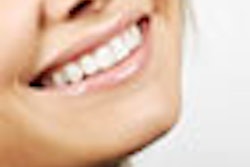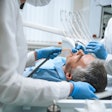Editor's note: Helaine Smith's column, The Mouth Physician, appears regularly on the DrBicuspid.com advice and opinion page, Second Opinion.
The rhetoric has started again over whether to remove third molars and ban amalgams.
I feel strongly that all third molars should be removed, as I have stated previously in past writings for DrBicuspid.com. The evidence of periodontal disease and bacteria cannot be disputed. Personally, I have only seen two to three adults with healthy third molars in the past 20 years of practice. That makes for thousands of unhealthy third molars that could cause a chronic inflammatory process to occur.
The debate over banning amalgam is a bit more complicated. I feel amalgam should not be placed as a restoration of choice initially, and it is a crime to place an amalgam in a child's or teenager's tooth. Composite resins are the proper material in 2010, along with bonded ceramics.
In a recent article in the Journal of Dental Research (October 2010, Vol. 89:10, pp. 1063-1067), the efficacy of composite restorations was studied over a 12-year period. The study concluded that caries risk plays an important role in survival of any restoration, and that in high-risk patients composite and amalgam restorations showed comparable performance. Most notably, the study found that for combined- and low-risk patients, composites showed a better survival rate at 12 years.
I have a family practice that is filled with large amalgams from a previous dentist. Amalgam patch upon amalgam patch. When the patient has more decay on an exposed root surface, the only way often to correctly restore the perio-involved tooth is to patch with amalgam because 90% of the tooth is already amalgam.
Hence, in my family practice I have not thrown out the amalgamator, but in my cosmetic practice I have not needed or placed an amalgam in 13 years.
Patching teeth and stacking amalgam onto amalgam until there is no clinical crown tooth structure left is not a service. I see patients who are 55 years old and have been patched for years. Now they are faced with eight to 10 teeth that need extensive work with a guarded predictability of successful rehabilitation. Patients are living well into their 80s, and the patching teeth method of doing dentistry no longer helps the majority of people.
In order to phase out amalgams, we need to embrace adhesive dentistry and not place amalgams to start with. We need to offer onlays as viable options to patients instead of easy amalgam crown buildups. It is time to learn a new way of restoring teeth.
The paradigm shift must begin in dental schools, and we need to instill this philosophy to newly trained dentists. The focus should be on how to do composite resins and onlays, not retention grooves in the boxes of amalgams.
G.V. Black stated that "no dentist has a moral right to be anything but a constant student."
I think he would be upset to know that in 2010 many still abide by his teachings of the late 1800s. It is time we act like mouth physicians and perform modern dentistry.
The comments and observations expressed herein do not necessarily reflect the opinions of DrBicuspid.com, nor should they be construed as an endorsement or admonishment of any particular idea, vendor, or organization.
Copyright © 2010 DrBicuspid.com



















